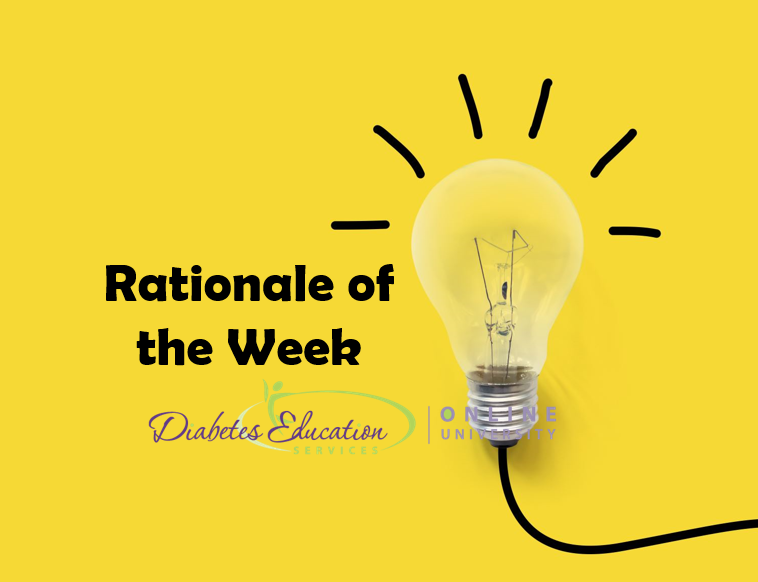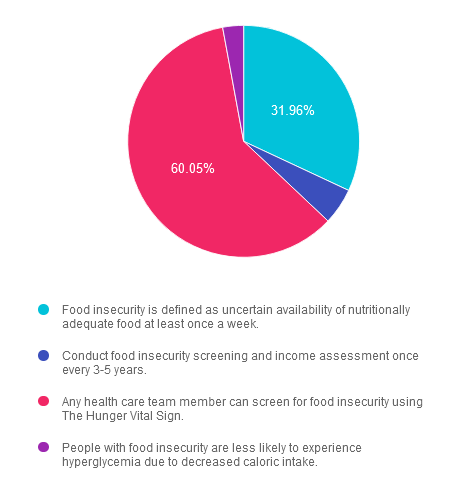For last week’s practice question, we quizzed participants on assessing food insecurity with diabetes. 60% of respondents chose the best answer. We want to clarify and share this important information, so you can pass it on to people living with diabetes and your colleagues, plus prepare for exam success!
Before we start though, if you don’t want any spoilers and haven’t tried the question yet, you can answer it below: Answer Question

Question: Food insecurity affects 16% of adults with diabetes compared with 9% of adults without diabetes.
Based on the ADA standards of care, which is the most accurate statement regarding food insecurity and people with diabetes?
Answer Choices:
- Food insecurity is defined as uncertain availability of nutritionally adequate food at least once a week.
- Conduct food insecurity screening and income assessment once every 3-5 years.
- Any health care team member can screen for food insecurity using The Hunger Vital Sign.
- People with food insecurity are less likely to experience hyperglycemia due to decreased caloric intake.

Getting to the Best Answer
Answer 1 is incorrect. 31.96% chose this answer. “Food insecurity is defined as uncertain availability of nutritionally adequate food at least once a week.” Although this answer is partially correct, the last part, “at least once a week” makes this answer incorrect. According to the USDA food insecurity is defined as, “the limited or uncertain availability of nutritionally adequate and safe foods, or limited or uncertain ability to acquire acceptable foods in socially acceptable ways.” It doesn’t include a time span or frequency.
Answer 2 is incorrect. 5.08% of you chose this answer. “Conduct food insecurity screening and income assessment once every 3-5 years.” This answer also has elements of accuracy, but flails at the end. The ADA Standards recommend conducting food insecurity screenings on a yearly basis and helping individuals access needed resources.
Answer 3 is correct. Great Job! About 60.05% of respondents chose this. “Any health care team member can screen for food insecurity using The Hunger Vital Sign.”
The Hunger Vital Sign identifies households as being at risk for food insecurity if they answer that either or both of the following two statements is ‘often true’ or ‘sometimes true’ (vs. ‘never true’):
“ Within the past 12 months we worried whether our food would run out before we got money to buy more.”
“ Within the past 12 months the food we bought just didn’t last and we didn’t have money to get more.”
Finally, Answer 4 is incorrect. 2.91% chose this answer. “People with food insecurity are less likely to experience hyperglycemia due to decreased caloric intake.” There is no scientific evidence to support this answer and people with food insecurity can experience periods of adequate food intake interspersed with inadequate food intake.
We hope you appreciate this week’s rationale! Thank you so much for taking the time to answer our Question of the Week and participate in this fun learning activity!









